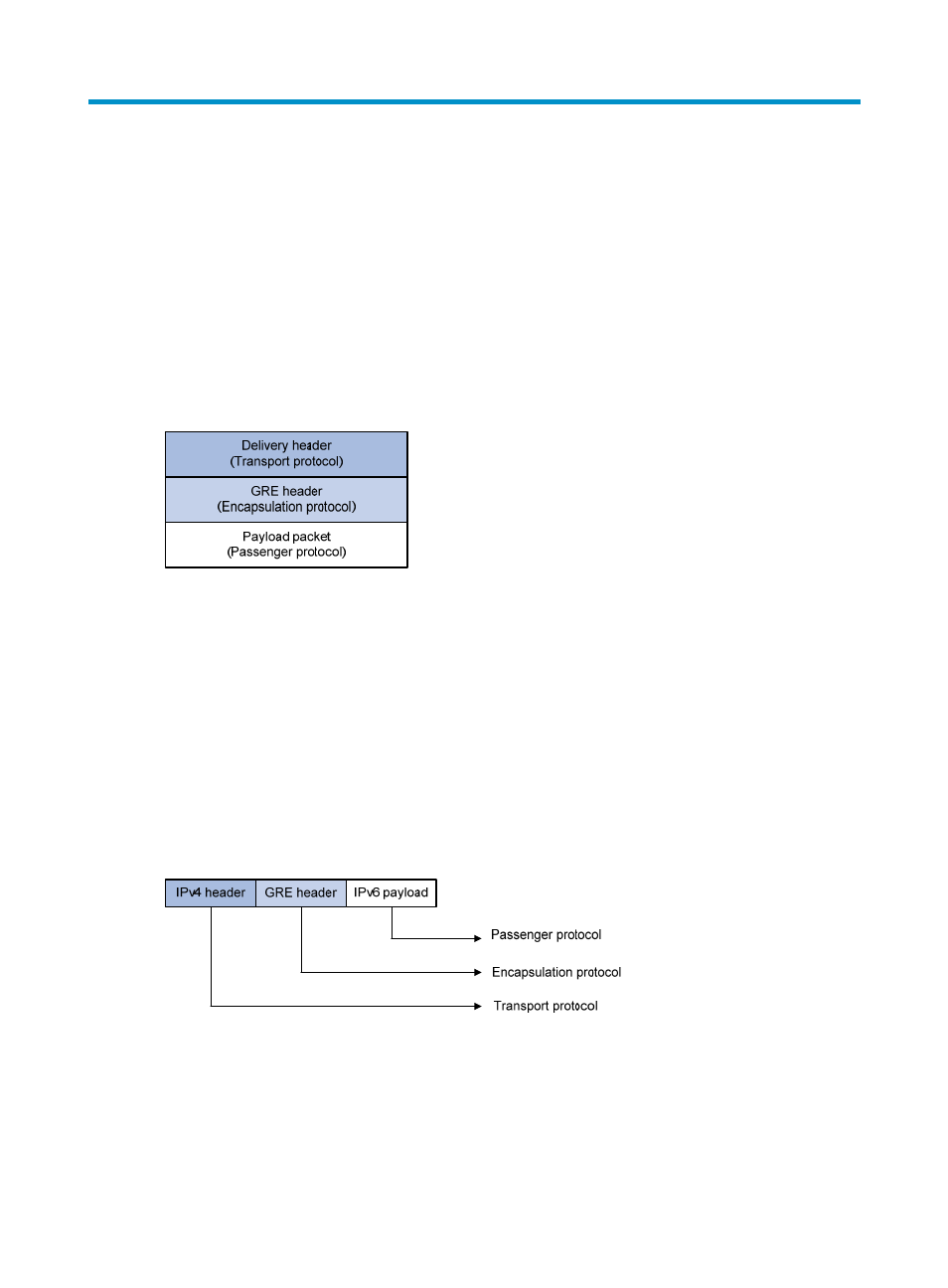Controlling sending icmpv6 packets, Enabling replying to multicast echo requests, Configuring gre – H3C Technologies H3C S12500 Series Switches User Manual
Page 186: Overview, Gre encapsulation format

173
22B
Configuring GRE
159B
Overview
Generic Routing Encapsulation (GRE) is a tunneling protocol that can encapsulate multiple network layer
protocols into virtual point-to-point tunnels over an IP network. Packets are encapsulated at one tunnel
end and de-encapsulated at the other tunnel end.
315B
GRE encapsulation format
Figure 71 GRE encapsulation format
As shown in
810H
Figure 71
, a GRE-tunneled packet comprises the following parts:
•
Payload packet—Original packet. The protocol type of the payload packet is called the passenger
protocol.
•
GRE header—After GRE receives a payload packet, it adds a GRE header to the payload packet
to change the payload packet to a GRE packet. GRE is called the encapsulation protocol.
•
Delivery header—Transport protocol used to transfer the GRE packet. The system adds a transport
protocol header to the GRE packet to deliver it to the tunnel end.
For example, to transfer an IPv6 packet over an IPv4 network through a GRE tunnel, the system
encapsulates the IPv6 packet in the format shown in
811H
Figure 72
. The passenger protocol is IPv6, the
encapsulation protocol is GRE, and the transport protocol is IPv4.
Figure 72 Format of a GRE-encapsulated packet
Depending on the transport protocol, GRE tunnels fall into the following types:
•
GRE over IPv4—The transport protocol is IPv4, and the passenger protocol is any network layer
protocol.
•
GRE over IPv6—The transport protocol is IPv6, and the passenger protocol is any network layer
protocol.